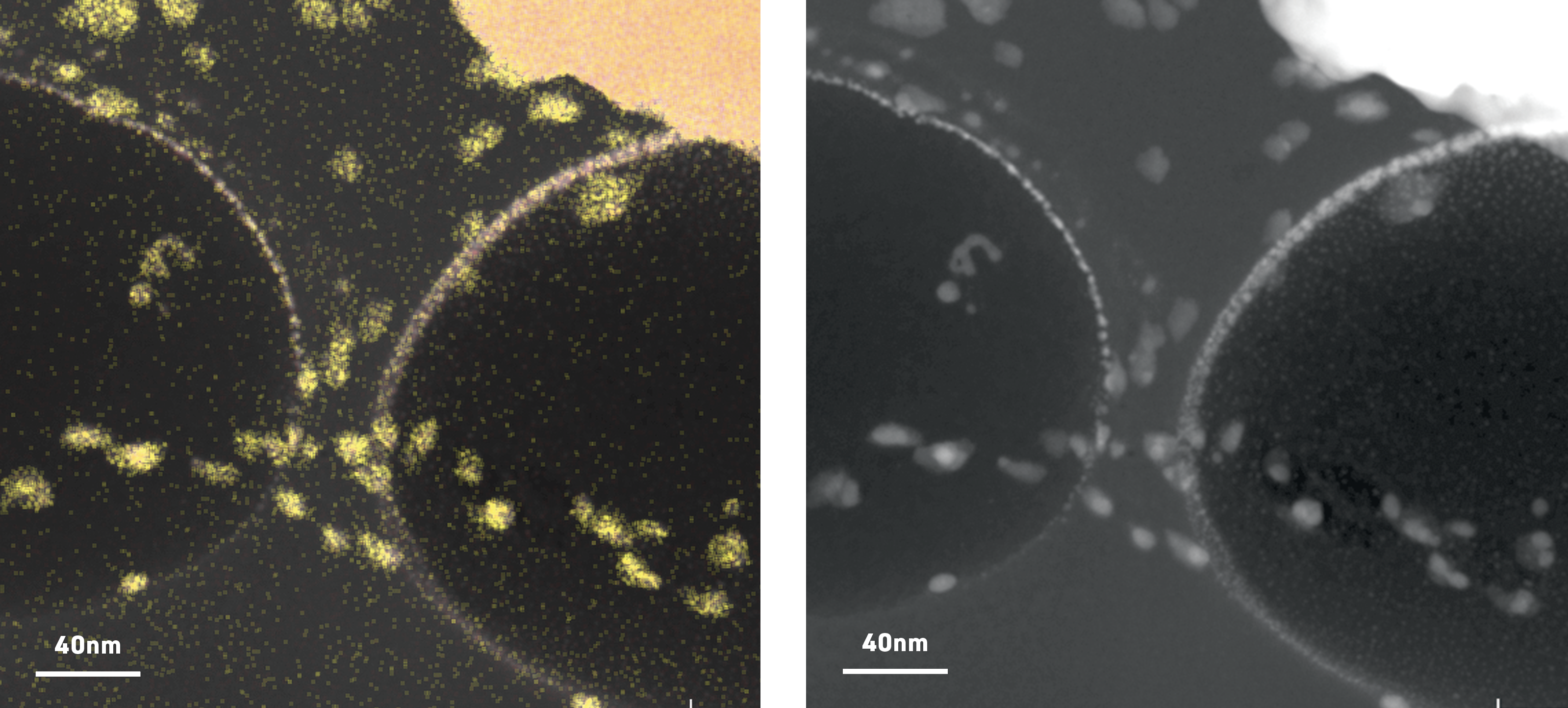Increasing efficiency and sustainability of gold exploration and mining is a challenge when the overall quality of many ore bodies is declining.
The unique properties of gold – inert, malleable, and beautiful – have made it a valuable resource for over 7,000 years. Today, 75% of gold is mined from orogenic deposits. These form when hot fluids from deep within the earth travel up to near the surface through fractures in the rock. Once near the surface they cool and dissolved metals and minerals solidify into veins that can then be mined. Despite most high-grade gold being found in this type of deposit, gold isn’t very soluble and doesn’t travel easily in fluids. How large quantities of gold came to be in the fluid has long puzzled researchers – until now.
Atomic resolution microscopy at Microscopy Australia’s University of Western Australia (UWA) facility has helped to reveal, for the first time, the role of carbon in concentrating precious metals into fluids to create exceptionally high-grade deposits.
Dr Laura Petrella, with a team from the Centre for Exploration Targeting and the Geological Survey of Western Australia, along with platform scientist Dr Alexandra Suvorova, used a range of high-end microscopy and microanalysis techniques to examine specimens of ultra-high-grade gold-bearing quartz veins from five mines around the globe.
A specific carbon-rich fluid chemistry deep within the earth causes single atoms of gold, and other precious metals, to be surrounded by molecules to form a nanoparticle. While gold itself is not very soluble, the larger nanoparticles can be carried along easily by fluids near to the surface. As it approaches the surface, changes in temperature cause the fluid chemistry to change and the nanoparticle to break apart releasing the gold to form a deposit.

Scanning transmission electron microscopy images of precious metal nanoparticles in a quartz vein. The left image has an overlaid elemental map (EDS) highlighting the gold (orange) and silver (yellow) atoms clumped together into nanoparticles.
By uncovering the chemical make-up of fluids that result in high-grade gold deposits, the research team has provided mining operations around the world with valuable information on how to better find and target ultra-high-grade gold deposits. Mining high-grade deposits is both more energy efficient and has a lower environmental footprint – crucial to developing a more sustainable mining sector.
“Our work aims at further understanding the formation of high-grade, high-tonnage ore bodies so that mineral explorers may develop the tools for a more efficient targeting of these deposits,” Dr Petrella said.
L. Petrella et al., Nature Communications 2022 DOI: 10.1038/s41467-022-31447-5
Exploratory drilling in Western Australia.
January 9, 2023